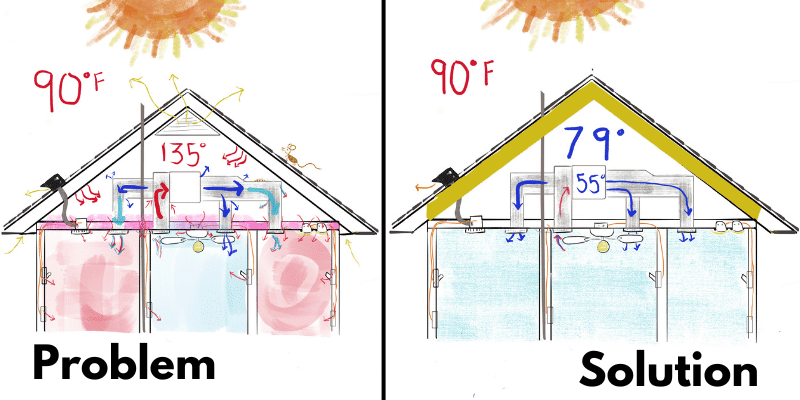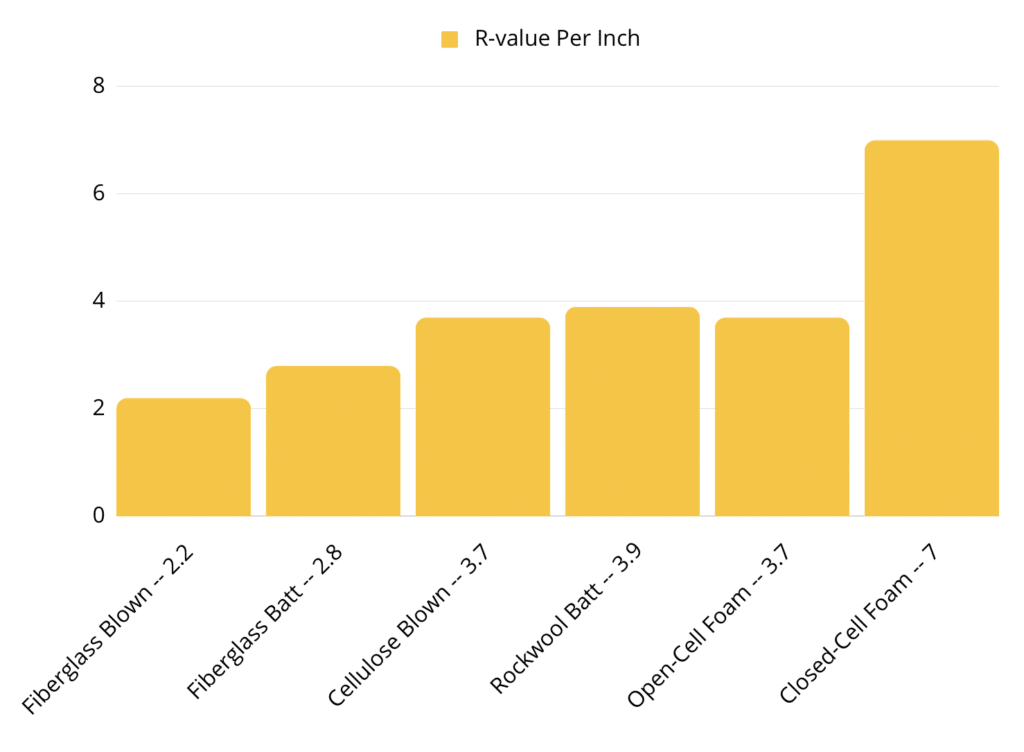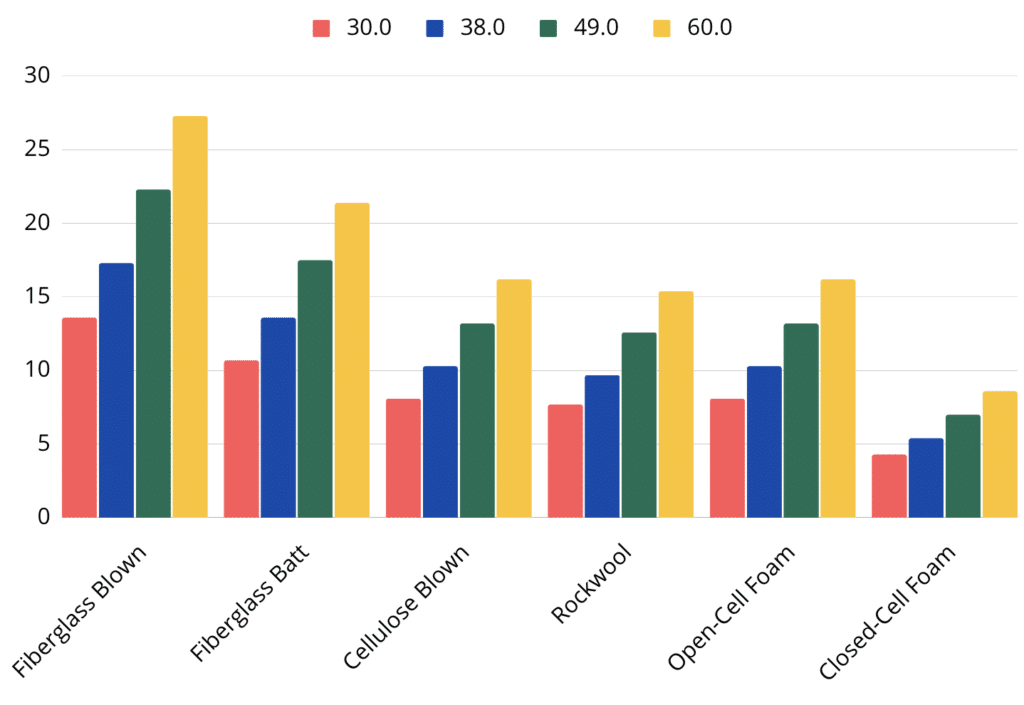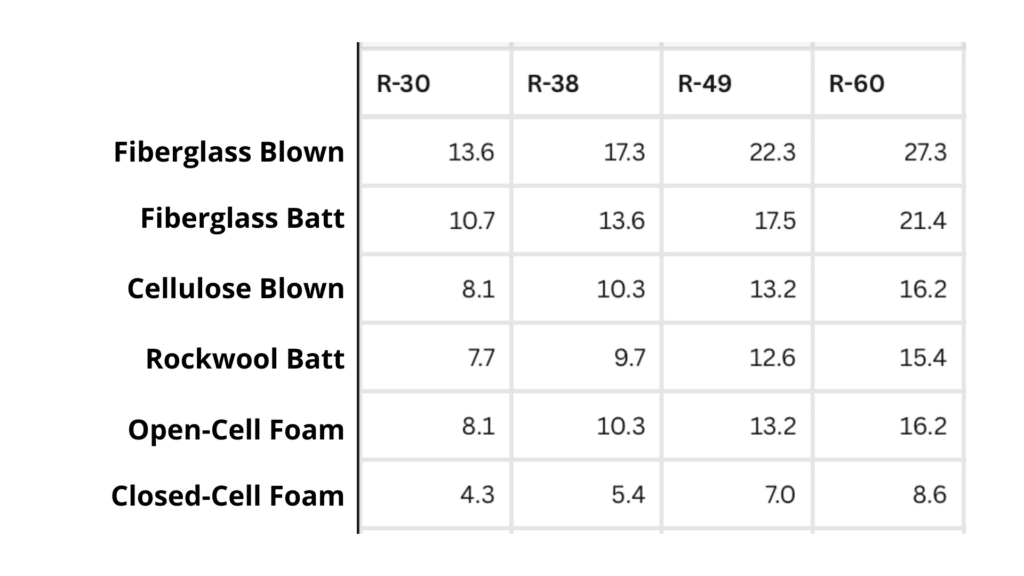Howdy Homeowner ✨ Friends!
If you’re looking for information about attic insulation near me, then you are in the right place! Let’s answer those burning questions and unleash the magic of a perfectly insulated attic! 🏰

If you want to make an intelligent and informed decision with your attic insulation, then download my 📚 e-Book titled, “Secrets to Making Your Home Comfortable and Energy Efficient.” Are you located near the vibrant city where 🎸 music, 🌮 tacos, and 🤠 cowboy boots reign supreme? Feel free to request a 🕵️♂️ Diagnostic Consult. We can inspect your Austin, TX, area house. Or simply request an Estimate 💰 here. — Shawn Mansur, Founder & Author at Stellrr

📞 Call or 💬 Text (512) 714-9796
💡 Here are the 47 knockout 💥🥊 questions I get as an attic insulation contractor.
- What type of insulation is best for an attic?
- Which is better attic insulation, blown or rolled?
- How often should attic insulation be replaced?
- Can you over insulate an attic?
- Does attic insulation make a big difference?
- What is the easiest way to insulate an attic?
- How do I insulate my attic myself?
- Is batt or blown insulation better?
- What are the disadvantages of attic insulation?
- Should I spray foam my attic?
- What is the most economical way to insulate an attic?
- Should I insulate my attic rafters?
- Is R30 enough insulation for the attic?
- Does R30 and R38 make a difference?
- Is R49 good for attic insulation?
- Is it possible to have too much insulation in your attic?
- Is R30 better than R60?
- How many inches is R60 attic insulation?
- Is R60 too much insulation? How many inches of insulation does R60 take?
- How much blown insulation for R49?
- How do you get R50 attic insulation?
- How long does R30 insulation last?
- Does higher R-value mean better insulation?
- What are the pitfalls of blown in insulation?
- Is blown-in attic insulation worth it?
- How many years does blown in insulation last?
- Should I remove old attic insulation before adding new?
- Which is better spray foam vs blown-in insulation?
- How often should blown-in attic insulation be replaced?
- How messy is blown-in insulation?
- What are the cons of attic insulation?
- Can you put too much insulation in your attic?
- Can you put too much blown insulation in your attic?
- Which is better batt or blown insulation?
- Can I do blown-in insulation myself?
- Can you have too much insulation in your attic?
- What is the R-value of insulation for an attic?
- Can insulation R-value be too high?
- How many iches of insulation is R-38?
- How do I increase my attic R-value?
- How do I know if my attic has enough insulation?
- Does doubling foam board double the R-value?
- How deep is R60 attic insulation?
- What is normal attic R-value?
- What is the best R-value per inch?
- Should I insulate my attic floor or ceiling?
- Should attic insulation be faced or unfaced?
What type of insulation is best for an attic? 🤔
Behold, the majestic champion of insulation: Spray foam! 🛡️🔥 It’s like an enchanting wizard, casting spells of energy efficiency and cozy comfort upon your attic. With its air-sealing powers, it defeats pesky drafts and saves you more gold than a leprechaun’s pot at the end of the rainbow. Say farewell to temperature extremes and revel in a home that feels like a cozy cocoon.
Attic Insulation Problem and Solution for Maximum Results
[Copyright: Stellrr.com]

Which is better attic insulation, blown or rolled? 🤷♂️
Picture this: Blown insulation is like a fluffy cloud that envelops every nook and cranny, providing even coverage that makes your attic as cozy as a unicorn’s nest. 🌬️☁️ On the other hand, rolled insulation is a reliable knight, easy to handle as it unravels like a grand scroll of protection. Choose your champion wisely. Both are charged with defending your attic against the chilling forces of winter and the scorching blaze of summer.
Personally, I would never recommend rolled batt insulation to a friend or family member.
How often should attic insulation be replaced? ⏰
The passage of time! Like sands through the hourglass, attic insulation weathers with age. But fear not, brave homeowners! If you have a vented attic, replace your insulation every 10 to 15 years.
If you have a spray foam encapsulated attic, you never need to replace the insulation.
Think of it like washing your clothes. Your clothes would be dirty if you wore them outside for 10 years and never washed. Your attic insulation collects all the pollen, mold, and dust in the air each day.
Unless you replace the insulation, your attic has 10 years of allergens. That junk makes its way into your conditioned space through cracks and penetrations in the ceiling. You breathe in all the nastiness hiding in your attic insulation.
This is one reason why the EPA says that indoor air quality is often 2-5 times worse than outside air.
Can you over insulate an attic? 🧐
The balance of insulation power! While we love a snug and cozy attic, too much insulation can be like wearing five winter jackets in the sweltering Sahara desert. 🧥🏜️ Avoid suffocating your humble abode by consulting insulation experts who know how to strike the perfect equilibrium between insulation and ventilation, just like a master chef balancing flavors in a gourmet dish.
Check the Recommended Attic Insulation R-values Chart below.
Does attic insulation make a big difference? 💥
Absolutely! Attic insulation is like a superhero cape, fighting off energy losses and soaring your savings to new heights. It’s as if you’ve discovered the Fountain of Savings, where your energy bills shrink faster than Ant-Man dodging a pesky villain. Prepare for a home that’s cooler than Tony Stark’s Iron Man suit in the summer and toastier than Captain America’s shield in the winter.
What is the easiest way to insulate an attic? 🛠️
Fear not, brave DIYers! The most straightforward path to attic insulation glory lies in rolls of batt insulation. It’s like unrolling a red carpet of energy efficiency, effortlessly fitting snugly between your attic joists. It’s a DIY project that even Thor’s mighty hammer would approve of—mighty and straightforward.
The money you save on DIY installation, you will pay the energy company because you will have higher energy bills.
How do I insulate my attic myself? 🛠️
Put on your DIY armor and venture forth! Start by sealing air leaks like a cunning Sherlock Holmes, ensuring your attic is a fortress against drafts. Then, lay down your chosen insulation, whether rolls of batts or a blizzard of blown-in insulation. It’s like crafting a suit of armor for your home, protecting it from energy-wasting villains.
Is batt or blown insulation better? 🧤❄️
The age-old battle of insulation titans! Batt insulation is like a snug sweater, hugging your attic’s every curve precisely. Blown insulation, on the other hand, is like a winter storm, swirling and settling into every nook and cranny. Choose your ally wisely, based on your attic’s unique needs and your preference for installation ease.
I prefer blown insulation because it wraps around all wires and pipes. Batt insulation tends to leave gaps and cracks. I would never recommend batt insulation to a friend or family member.
What are the disadvantages of attic insulation? 🤔
While attic insulation is a magical elixir for energy efficiency, it’s essential to acknowledge its quirks. It can limit access to your attic, making retrieving treasures hidden in the depths harder. It’s like a secret lair with restricted entry, keeping the outside world at bay. However, fret not! With proper planning, access panels, and a dash of creativity, you can tame this disadvantage and maintain a harmonious balance.
Attic floor insulation makes it hard to find and fix mechanical, electrical, or plumbing issues. Spray foam in the rafters allows full access to the attic floor. Plus, rafter insulation allows your pest control tech to easily scout out any intruders.
Should I spray foam my attic? 💦
The allure of spray foam insulation! It’s like a warm embrace from a fluffy teddy bear, sealing every crevice with its expanding might. 🐻💨 If you seek the ultimate air seal and moisture barrier, spray foam is your champion. Just remember, like good sunscreen, it’s essential to apply it carefully, ensuring proper ventilation for a harmonious attic ecosystem.
There are 13-steps to properly converting a vented attic to a spray foam encapsulated attic. Most insulation contractors only do 2-3 of the 13-steps. You can get the inside scoop in my webinar.
What is the most economical way to insulate an attic? 💰
For the frugal minds among us, fear not! Rolled fiberglass insulation comes to the rescue like a cost-effective superhero. It gives you DIY affordability as if it learned its thrifty ways from the legendary Scrooge McDuck himself. Save your precious gold coins while basking in the warm embrace of energy savings!
With rolled fiberglass, you will save on installation costs. But, you will pay more for energy bills.
Should I insulate my attic rafters? 🏗️
The mighty rafters! While insulating attic rafters is like wrapping your home in a cozy blanket, it’s not always necessary. Consider your climate, attic usage, and whether your attic space is conditioned or unconditioned. Insulating the floor is often the norm, but should you choose to insulate the rafters, it’s like giving your attic an extra layer of snuggly armor.
Is R30 enough insulation for the attic? 🌡️
The battle against the elements! R30 insulation is like a stalwart warrior, defending your attic against temperature extremes. It’s suitable for regions with moderate climates, where the sun isn’t as fierce as a fiery dragon nor winter’s chill as biting as a white walker. However, consider consulting local experts to determine the best R-value for your location, ensuring your attic is prepared for any weather challenge.
Climate Zones for Attic Insulation Levels ❄️🔥

[Copyright: Stellrr.com]
| Climate Zone | Mininum R-Value for Attic Insulation |
| 1 | R30 to R49 |
| 2 | R49 to R60 (Austin TX Requires R49 blown or R25 foam) |
| 3 | R49 to R60 |
| 4 to 8 | R60 |
Does R30 and R38 make a difference? 🤔🔍
The difference between R30 and R38 insulation is like choosing between an espresso shot and a double espresso shot. While they both give you a jolt of energy, one packs a bit more punch! 💥☕
How much higher is R-38 compared to R-30? It depends on the manufacturer of the product. Each brand of insulation will have a different R-value than the next.
Check out my infographic on Measuring Attic Insulation Thickness Levels.
Is R49 good for attic insulation? 🔥
Oh, absolutely! Picture your attic as a sizzling hot oven on a sweltering summer day. Now, imagine R49 insulation as a cool, refreshing oasis in the midst of that fiery inferno. It’s like installing an icy force field that keeps your home blissfully comfortable while saving you precious coins on your energy bills. 💰❄️🌡️
But the key to making R49 work well is air sealing. According to Dr. Energy Saver, insulating without air sealing is Malpractice. You can learn more about air sealing here.
Is it possible to have too much insulation in your attic? 🌪️
Attic insulation is like a delicious cake. While a slice of cake brings joy and delight, a towering mountain of cake might topple over and become more of a mess than a marvel. Similarly, too much insulation can restrict proper airflow, leading to a stifled attic that can’t breathe. So, find the sweet spot where insulation is just right like Goldilocks choosing the perfect porridge. 🍰🐻🔥
Check out my infographic on the Recommended Insulation R-Value Levels By Climate Zone
Is R30 better than R60? 📏💡
The eternal battle of R-values! It’s like comparing a snappy sports car to a roaring monster truck. R60 insulation is like the heavyweight champion, providing maximum thermal resistance, while R30 is like the agile speedster, offering mediocre protection without going overboard. The key is to find the right fit for your home’s needs, like finding the perfect dance partner who knows all the right moves. 🚗💨💪💃
How many inches is R60 attic insulation? 🤔
Imagine a fluffy, plush, soft cloud that you could just sink into. R60 insulation is like that cloud, providing a generous thickness that reaches up to 16-18 inches in your attic. It’s like having a fluffy marshmallow layer that blankets your home, keeping you cozy and snug as a bug in a rug. ☁️🛌🏡
Check out my infographic on the Recommended Insulation R-Value Levels By Climate Zone
The R-Value Per Inch of Attic Insulation Materials
[Copyright: Stellrr.com]

Is R60 too much insulation? How many inches of insulation does R60 take? 📏🏠
Let’s put it this way, my friends. Imagine building a house of cards, carefully stacking one card upon another. While a towering mansion might make you gasp in awe, striking a balance is important. R60 insulation is like building that card house up to the sky—impressive, but do you really need to reach the moon and back? Aim for a thickness of 16 inches of cellulose or 22 inches of fiberglass to ensure you have the Goldilocks of insulation—just right! 🏰🃏🌕
Inches of Insulation Material Required to Achieve Specified R-Value
[Copyright: Stellrr.com]

The R-value shown is the Prescriptive Code Requirement which applies to Fiberglass, Cellulose, and Rockwool.
Spray Foam is different. Most inspectors require foam at the Performance Code Level. For example, in Austin, TX the Prescriptive Code is R-49, whereas Performance Code is R-25 for spray foam. Check with your local code inspector to verify what R-value they will accept based on the Performance Code interpertation with spray foam.
Prescriptive means exactly as the IECC writes the code. Performance means what is accepted when verifying the building assembly will perform as good as or better than the Prescriptive Code.
SIDE NOTE ON FOAM
How much blown insulation for R49? 🤔
Ah, blown insulation! It’s like a gentle snowfall on a serene winter’s day, covering your attic with a cozy blanket of warmth. To achieve R49, you’ll want to ensure a fluffy layer of blown insulation measuring around 13 inches cellulose or 18 inches fiberglass. It’s like sprinkling powdered sugar on a scrumptious pastry, adding that perfect sweetness to your home. ❄️🍰📏
How do you get R50 attic insulation? 🏠🔍
Achieving R50 attic insulation is like mastering a secret recipe for comfort. You’ll need a generous helping of insulation, aiming for a thickness of around 13.2 inches cellulose or 21.5 inches fiberglass. It’s like creating the perfect blend of ingredients, where each layer of insulation adds flavor to your home’s coziness. Bon appétit! 🧪👨🍳📏🏡
Exact Inch Depth of Insulation Material to Achieve Specified R-Value
[Copyright: Stellrr.com]

The R-value shown is the Prescriptive Code Requirement which applies to Fiberglass, Cellulose, and Rockwool. Spray Foam is different.
Most inspectors require foam at the Performance Code Level. For example, in Austin, TX the Prescriptive Code is R-49, whereas Performance Code is R-25 for spray foam. Check with your local code inspector to verify what R-value they will accept based on the Performance Code interpertation with spray foam.
Prescriptive means exactly as the IECC writes the code. Performance means what is accepted when verifying the building assembly will perform as good as or better than the Prescriptive Code.
SIDE NOTE ON FOAM
How long does R30 insulation last? 🤔⏳
Think of R30 insulation like a timeless piece of furniture that withstands the test of time. It can last decades, but that doesn’t mean it is effective. If it was ever compressed, nested in, walked through, or damaged, it may not be effective. If it wasn’t installed right, you have a bigger problem.
The better question would be, when should I replace my attic insulation? The answer is if your home is 10 years or older, you would greatly benefit from replacing your insulation. When new insulation is done right, you can rest easy knowing that R30-R60 insulation will be there, keeping you snug as a bug for years. 🛋️⌛🛌
If you spray foam insulate your attic, then you’ll never have pest feces on your insulation. Plus, the allergens won’t be coming in via the vents and soiling your attic, making a need for replacing it.
Learn more about how to know when insulation needs to be replaced in my book.
Does higher R-value mean better insulation? 💡🌟
The R-value—a measure of insulation’s superpowers! While a higher R-value is like having a powerful shield against the elements, it’s not the only factor to consider. It’s like choosing a superhero—sure, they may have incredible strength, but can they also fly, shoot lasers, and make a mean cup of coffee? Consider your home’s unique needs, the climate you’re in, and consult with insulation experts who can guide you to the perfect blend of comfort and efficiency. 💪🌟☕
My personal preference is a spray foam encapsulated home because it brings the air ductwork into the semi-conditioned envelope. My second favorite is all-boric cellulose because it is denser and more pest resistant than fiberglass.
Download the Attic Insulation & Home Comfort e-Book

📞 Call or 💬 Text (512) 714-9796
What are the pitfalls of blown-in insulation? 🤔💥🔥
As we dive into the world of blown-in insulation, let’s explore the pitfalls that may lurk beneath the surface. Picture your attic as a mysterious maze and blown-in insulation as a treasure hunt. While the treasure is comfort and energy savings, you might encounter a few challenges.
Beware of the mischievous gusts of wind that can scatter loose insulation like confetti. Also, occasional settling may occur over time. Plus, if anyone ever walks through your attic to repair mechanical, electrical, or plumbing, it will trample and ruin the insulation. Critters love to nest in blown fiberglass insulation but hate all-boric cellulose.
The biggest pitfall of blown attic insulation is that it only stops one of the three types of heat. Whereas spray foam stops all three types of heat: radiant, convective, and conductive.
But fear not, for with proper installation, these pitfalls can be tamed like a wild stallion, ensuring your home remains a haven of coziness. 🏰🔍🌬️🎉
Is blown-in attic insulation worth it? 🤔🌬️💰
The age-old question of value! Imagine blown-in insulation as a magic carpet, whisking you away to a realm of comfort and energy efficiency. Its ability to fill nooks and crannies creates a seamless layer of protection against the elements. Blown insulation is definitely better than batt insulation. Like a thrifty wizard, blown-in insulation can save you precious gold coins on your energy bills, making it a worthwhile investment in the long run. So, hop on that magic carpet and let it take you on a journey of comfort and savings! ✨🚀💰🏰
How many years does blown-in insulation last? 🤔⏳🏠
The longevity of blown-in insulation—a topic as mysterious as the fountain of youth! Like a well-crafted spell, blown-in insulation can last for several decades, keeping your home cozy and efficient.
The better question is, how do I know when my attic insulation should be replaced? Learn more in my webinar.
However, factors such as environmental conditions and maintenance play a role in its lifespan. So, treat your blown-in insulation like a prized artifact to ensure it stands the test of time. 🪄⌛🏡
Should I remove old attic insulation before adding new? 🤔🗑️🏠
Let’s tackle this attic insulation dilemma head-on! Picture your old insulation as a vintage coat, worn and weary from battling the elements. While it may have served you well, it may be time to replace it with a new comfort layer.
In most situations, the old insulation should be removed so that the are can be sterilized, air sealed, and a new canvas can be installation. Watch my 10-Secrets training for more details.
It’s like giving your home a fresh makeover, where the new insulation can shine like a radiant star. So, bid farewell to the old and embrace the new—it’s a fashion statement for your attic! 👘👋✨🏰
Which is better, spray foam vs. blown-in insulation? 🤔💦🌬️
The battle between spray foam and blown-in insulation—an epic clash of comfort titans! Picture spray foam as a superhero cape, tightly wrapping your home in a seamless embrace. It seals every nook and cranny, leaving no room for the cold to creep in.
On the other hand, blown-in insulation is like a fluffy cloud, filling your attic with a cozy layer of warmth. Each has its own strengths, so choose wisely based on your home’s unique needs. It’s like picking between two warriors, both ready to defend your home against the elements.
If given the opportunity, I would choose spray foam in most cases because it stops all three types of heat. Whereas blown-in only stops one type of heat, is more easily damaged, and has other flaws. 🦸♂️🔥🌬️☁️🛡️
How often should blown-in attic insulation be replaced? 🤔⏰🏠
The ebb and flow of time—a dance we all must join! While blown-in insulation can last for decades, it’s wise to keep an eye on its performance.
Think of it like a loyal companion that occasionally needs a makeover. Consider inspecting your insulation every few years, ensuring it’s fluffy and intact. If it starts to settle, has pest damage, discolors, or shows signs of wear, it may be time for a makeover. So, keep that relationship strong and your home cozy for years to come! 💃⌛🏡🌬️
You could benefit from a thorough inspection if the insulation is 10 years or older. To learn more about how to know when the insulation should be replaced, watch my 10-Secrets training.
How messy is blown-in insulation? 🤔🔮🌬️
Ah, the messiness factor—like a wild tornado swirling through your mind! But fret not, dear homeowner, for blown-in insulation can be tamed with the right precautions. Picture it as a controlled explosion of coziness, transforming your attic into a haven of comfort. While some messiness is inevitable during installation, professionals use protective measures to contain the fluff. It’s like a magician’s trick—leaving your home cozy and enchanting while keeping the mess at bay. So, embrace the controlled chaos and let the magic of insulation unfold! 🪄🌪️🌬️✨
What are the cons of attic insulation? 🤔🏰📉
Let’s uncover the dark side of attic insulation—the cons that hide in the shadows. While insulation is a comfort superhero, it’s not invincible. One potential drawback is the initial investment, as quality insulation requires some financial commitment. Additionally, improper installation can lead to pitfalls like poor efficiency or restricted airflow. But fear not! With proper research, professional guidance, and a touch of home improvement magic, you can overcome these cons and create an attic haven fit for royalty. 🦸♂️💰🏰🔮
Can you put too much insulation in your attic? 🤔📏🏰
The quest for the perfect balance—like finding the golden insulation ratio. Picture your attic as a delicate ecosystem where too much insulation can disrupt natural harmony. While insulation is a comforting treasure, excessive amounts can trap moisture and restrict proper airflow. It’s like piling too many toppings on a pizza, turning it into a soggy mess. So, seek guidance from insulation experts, ensuring you strike that sweet spot where comfort and efficiency coexist. 🍕🔥🏰
Check out my infographic on recommended attic insulation by climate zone.
Can you put too much blown insulation in your attic? 🤔📏🌬️🏰
Let’s dive deeper into the wonders of blown-in insulation. While creating a mountain of fluff in your attic may seem tempting, it’s important to exercise restraint. Too much-blown insulation can lead to compression, restricting its effectiveness. It’s like wearing ten layers of sweaters on a sunny beach day—it may look impressive, but it won’t bring you comfort. Aim for the recommended thickness and let your insulation breathe, ensuring your home remains a cozy fortress. 🏖️👕🌬️🏰
Check out my infographic on recommended attic insulation by climate zone.
Which is better, batt or blown insulation? 🤔🧱🌬️🌪️
The battle between batt and blown insulation—an epic clash of comfort titans! Picture batt insulation as a brick wall, solid and dependable. It’s like a snug quilt protecting your home from the cold winds of winter.
On the other hand, blown insulation is like a fluffy cloud, filling every nook and cranny with warmth.
Both have their strengths and weaknesses, so consider your home’s unique needs and consult insulation experts to choose the right contender for your comfort championship. It’s time to make the ultimate insulation decision! 🥊🔥🌬️☁️🏰
I prefer blown insulation in an attic. Blown gets in the cracks and whereas batt is harder to install right, and is more likely to fail.
Can I do blown-in insulation myself? 🤔🛠️🌬️🏰
The DIY spirit—a fire burning brightly within your soul! While blown-in insulation may seem like a tempting adventure, it’s wise to tread carefully.
While you could pretend to be a dentist and pull your own tooth, it doesn’t mean you should DIY it.
Picture it as a magic spell that requires a skilled wizard to cast. Proper equipment, techniques, and safety precautions are essential for successful installation. So, unless you possess the wisdom of Gandalf and the skills of a master craftsman, it’s best to entrust this task to the insulation experts. Let them weave their magic, ensuring your home becomes a fortress of comfort and efficiency. 🧙♂️✨🏰🌬️
How Effective Is Your Existing Attic Insulation? Lab Test vs. Reality

📞 Call or 💬 Text (512) 714-9796
Can you have too much insulation in your attic? 🤔🏠❄️
Picture your attic as a mystical treasure chest and insulation as the jewels within. While insulation brings comfort and energy efficiency, like a warm hug from a fuzzy teddy bear, it’s crucial not to go overboard.
Too much insulation can suffocate your home, like drowning it in a sea of fluff. So, strike the perfect balance—enough to keep Jack Frost at bay but not so much that your attic resembles a snow-covered wonderland. Let your home breathe and thrive! ⚖️🏰❄️
Be sure to see my infographic on the proper attic insulation levels according to where you live.
What is the R-value of insulation for an attic? 🤔🌡️🏠
The mighty R-value—a numerical symbol of insulation’s power! Think of it as a superhero’s emblem, representing their strength. For attics, a common R-value recommendation is R-38. It all depends on your climate zone and the materials used.
It’s like donning a superhero cape made of thermal protection, shielding your home from the icy grip of winter. So, embrace the power of R-38 and let your home become a fortress of warmth and energy efficiency! 🦸♂️🔥🌡️🏰
Can insulation R-value be too high? 🤔📈🏠
While the R-value is a superhero in the insulation world, it’s important to remember that even heroes have limits. Picture insulation R-value as a speedometer—having a powerful engine is great, but too much speed can lead to trouble. Similarly, excessively high R-values may not provide a significant benefit beyond a certain point. It’s like driving a rocket ship on a quiet suburban street—impressive but unnecessary. Check out my infographic on How Much Insulation By Climate Zone to determine the ideal R-value for your home, striking the perfect balance between efficiency and cost-effectiveness. 🚀📈🏠💨
How many inches of insulation is R-38? 🤔📏❄️
The beauty of numbers and measurement—a mathematical dance of precision! To achieve the mighty R-38, you’ll want a fluffy insulation layer measuring approximately 10-18 inches. The thickness depends on the insulation material. You can check out my infographic on Inches Required by Material Type here.
Achieving R38 is like covering your attic with a cozy, snow-white duvet, inviting you to snuggle up and enjoy the warmth. So, let the ruler guide your hands and create that perfect layer of insulation for a winter wonderland in your home! 📏❄️🛌🏰
How do I increase my attic R-value? 🤔🔝🏠
The quest for a higher R-value is like climbing a mountain to reach the peak of comfort and efficiency.
I rarely recommend a “cap over” where insulation is added to the existing. A cap over the existing insulation might be okay if your home was built in the last 10 years.
What is the difference between a newer home and an older one? A new home has higher standards for ACH (Air Changes per Hour). What ACH measures is how leaky the home is. You may be able to get away with not air sealing if it is a newish home.
But in older homes, air sealing is going to be much more important than increasing the R-value of your attic insulation. You can learn more in my 10 Attic Insulation Secrets training here.
To answer the original question, here is what to do if you want to increase the R-value in your attic. Start by adding more insulation to your attic, like building layers of protection against the elements.
It’s like putting on layers of clothing to brave the winter chill—each layer adds another level of warmth. Embrace the challenge, unleash your inner mountaineer, and let your attic reach new heights of coziness! ⛰️🔝❄️🏠
How do I know if my attic has enough insulation? 🤔🔍🕵️♀️🏠
The quest for attic knowledge—a detective’s journey through the mysteries of comfort! To unveil the truth, grab your magnifying glass and investigate. Check the depth of your insulation, ensuring it reaches the recommended levels.
Download my PDF on Measuring Attic Insulation Effectiveness.
Look for signs of heat transfer or cold spots, like hidden clues waiting to be discovered. And don’t forget to consult with insulation experts, who possess the wisdom to unravel the enigma. Together, let’s solve the mystery and bring cozy harmony to your attic! 🔍🕵️♀️🧩🏠
Does doubling foam board double the R-value? 🤔🛡️🔢
The allure of doubling—a tempting path to increased power! While doubling foam board may seem like a magical solution, the truth is more nuanced. Picture it as building a fortress wall—adding more layers strengthens the defense, but the impact on R-value depends on the specific materials and their properties. It’s like wielding a shield of thermal protection, deflecting the cold winds of winter.
While doubling up on foam board theoretically doubles the R-value, it doesn’t mean it is effective. Frankly, I would never recommend it. However, if you have a continuous exterior sheathing of foam board, fine. Then the recommended R-value for interior wall cavities changes. But as a rule, I’d never use foam board on an attic floor. However, it is fine for an attic pony wall.
Consult with your local insulation experts to determine the best strategy for maximizing your R-value and achieving the ultimate comfort stronghold! 🛡️🏰🔢
How deep is R60 attic insulation? 🤔📏🏠❄️
R60—the pinnacle of insulation excellence, the deep ocean of comfort! You’ll want approximately 16-22 inches of insulation to reach this majestic level. The depth depends on the insulation material. Check out my infographic here on Insulation Thickness by Material.
R60 is like diving into a pool of coziness, shielding your home from the icy currents of winter. So, let your ruler guide your hands as you create a deep sea of insulation in your attic, where warmth reigns supreme! 📏🏊♀️❄️🏠
What is normal attic R-value? 🤔🌡️🏠
Let’s uncover the definition of normal—the benchmark of comfort in the realm of attic insulation. Typically, a normal attic R-value falls within the range of R-30 to R-60, depending on climate and regional recommendations for attic insulation.
It’s like finding your sweet spot on the temperature dial—just enough to keep you cozy without breaking the bank. 🌡️🏠🔝🔥
Unless your home is less than 10 years old, the originally installed R-value is not the current R-value. Plus, every few years the new “normal” code minimum is increased. So it is best to get a professional inspection.
What is the best R-value per inch? 🤔📏🏠🔝
The quest for efficiency—the pursuit of the holy grail of insulation! The best R-value per inch depends on the insulation material used. Some materials, like spray foam, offer higher R-values per inch, packing more power in a smaller space. It’s like a tiny superhero with super strength, delivering maximum comfort in a compact package.
Check out my infographic on Insulation R-values by Material.
Also, remember that R-value is only one measure of insulation effectiveness. R-value does not account for air leakage, which is arguably more important than R-value.
Consult with insulation experts to discover the perfect balance of thickness and R-value for your home, ensuring optimal efficiency without compromising space. Let’s unlock the secret of efficiency together! 🔑📏🏠🔝🦸♀️
Should I insulate my attic floor or ceiling? 🤔🔝🏠
The battle of the layers—deciding where to place the insulation for ultimate comfort! Insulating the attic floor is like wearing warm socks, keeping the heat within your living space. On the other hand, insulating the ceiling creates a protective shield, preventing heat from escaping into the attic.
Insulating the attic ceiling (between the rafters against the roof decking) will provide better performance.
Regardless of how you go, it is important to remember that you should never insulate both the attic floor and the attic ceiling. This creates a trap for moisture and can lead to mold, rot, and other damage.
Consider your home’s unique needs and consult with insulation experts who possess the wisdom to guide you toward the path of optimal comfort. Let’s conquer the battle and create a fortress of warmth in your home! 👣🛡️🏰🏠
Watch my 10-Secrets training on why insulating the attic ceiling is the best solution in homes where the air ductwork is in the attic.
Should attic insulation be faced or unfaced? 🤔🎭🏠
The choice between faced and unfaced insulation is like a dramatic performance—a clash of characters with different roles to play. Faced insulation wears a protective mask with a vapor barrier to shield against moisture. Unfaced insulation, however, embraces its natural form, allowing for better breathability. Consider your home’s needs and consult insulation experts, who will guide you through this theatrical decision. Let the curtain rise on comfort and efficiency! 🎭🏠🎬
In some climate zones, faced batt insulation is required. But in other places like the City of Austin, faced batts are against the code. If you install faced batts, the city inspector requires either the facing to be removed or to cut holes in the facing so it cannot act as a vapor barrier.
Here is what to do next when looking for attic insulation near me!
✨💌 Now, our grand journey through the world of attic insulation comes to a close. May you be armed with knowledge as you search for a perfectly cozy, energy-efficient attic. May your home be comfortable and your wallets be full!🏠💰✨
If you want to know more about doing your attic insulation right, then download my 📚 e-Book titled, “Secrets to Making Your Home Comfortable and Energy Efficient.” Are you located near the vibrant city where 🎸 music, 🌮 tacos, and 🤠 cowboy boots reign supreme? Feel free to request a 🕵️♂️ Diagnostic Consult. We can inspect your Austin, TX, area house. Or simply request an Estimate 💰 here.

With gratitude,

Shawn Mansur, Founder & Author 🤘🐂
Download your free copy of my 87-page e-Book! You can also 📞 Call or 💬 Text (512) 714-9796

